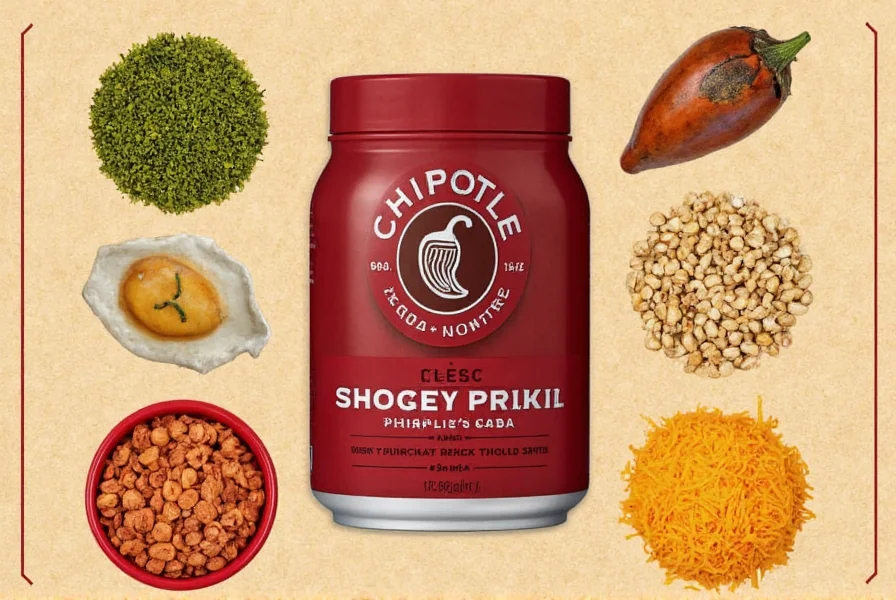Table of Contents
What Is Chipotle Mexican Grill?
Chipotle Mexican Grill is a fast-casual restaurant chain founded in 1993 by Steve Ells in Denver, Colorado. Known for its fresh ingredients, customizable bowls, burritos, tacos, and salads, Chipotle has become a global phenomenon with over 3,000 locations worldwide. The company emphasizes sustainable sourcing and ethical practices, aiming to "food with integrity."

History & Mission
Chipotle was founded with the goal of serving high-quality, responsibly sourced ingredients. Steve Ells started with a single location in Denver, and the chain has since expanded rapidly. Chipotle's mission is to "change the way people think about and eat fast food" by using fresh, high-quality ingredients without artificial preservatives or additives. They focus on sustainable farming and ethical treatment of animals, which has helped build a loyal customer base.
Popular Menu Items
Chipotle's menu is centered around customizable bowls, burritos, tacos, and salads. Here are some of their most popular items:
| Item | Description | Calories (approx) | Protein (g) |
|---|---|---|---|
| Barbacoa Bowl | Slow-cooked beef with rice, beans, salsa, and guac | 500-600 | 35-40 |
| Chicken Burrito | Grilled chicken, rice, beans, salsa, sour cream | 600-700 | 40-45 |
| Veggie Salad Bowl | Seasonal vegetables, brown rice, black beans, salsa, guac | 450-550 | 15-20 |
| Carnitas Tacos | Pork tacos with lettuce, salsa, and queso fresco | 350-450 | 20-25 |
Nutrition Information
Chipotle provides detailed nutrition information for all menu items on their website. They prioritize transparency, allowing customers to make informed choices. Key highlights include:
- Most menu items can be customized to fit dietary needs (gluten-free, vegetarian, vegan)
- Calorie counts vary based on ingredients; for example, adding cheese or sour cream increases calories
- Chipotle's ingredients are free from artificial preservatives, colors, and flavors
Store Locations
Chipotle has over 3,000 locations across the United States, Canada, the UK, France, Germany, and more. Customers can find their nearest location using the Chipotle website or mobile app. The chain continues to expand, with new stores opening regularly in major cities and suburbs.
How to Order
Ordering at Chipotle is simple and flexible:
- In-Store: Visit any Chipotle location and build your meal at the counter.
- Online: Use the Chipotle website to order for pickup or delivery.
- Mobile App: Download the Chipotle app for exclusive deals, easy ordering, and rewards.
- Third-Party Delivery: Available through Uber Eats, DoorDash, and Grubhub.
Frequently Asked Questions
Does Chipotle offer vegan options?
Yes! Chipotle offers several vegan options, including sofritas (tofu), black beans, brown rice, fajita vegetables, salsa, guacamole, and lettuce. Customers can build a vegan bowl or salad by selecting these ingredients.
How do I get a free Chipotle burrito?
Chipotle occasionally runs promotions for free items. For example, they sometimes offer free burritos for new app users or during special events. Check their website or app for current promotions. Additionally, Chipotle Rewards members can earn points toward free meals.
Does Chipotle use antibiotics in their meat?
Chipotle has a strict policy against using antibiotics in their meat. They source beef, chicken, and pork from animals raised without antibiotics. This is part of their commitment to "food with integrity."
Conclusion
Chipotle Mexican Grill has revolutionized fast-casual dining with its focus on fresh, high-quality ingredients and customizable meals. Whether you're looking for a quick lunch, a healthy dinner, or a delicious snack, Chipotle offers something for everyone. With a commitment to sustainability and transparency, it's no wonder Chipotle remains a top choice for millions of customers worldwide.












 浙公网安备
33010002000092号
浙公网安备
33010002000092号 浙B2-20120091-4
浙B2-20120091-4